
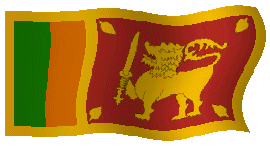
Sri Lanka
Deeply from 08 august to 04 september 2013
Day 1 departure from France on Emirates with stopover in Dubai. This time the stopover is of 7:00 hours, it is a little bit long, especially as during the night, in the airport, numerous travelers tend to lengthen(to stretch out) on 3 seats, what leaves no room a lot to sit down for the others. We aleady spent 3 hours walking because we could not seat and had to stand up in the middle of the shops !
Day 2 Arrived at Colombo in the beginning of after noon. A little delay: Visit and meal in the family of our driver. Departure late for Kandy. Not the time to see Kelaniya Raja Maha Viharaya planned in our project, in 10 km from Colombo on the road of Kandy.
Late arrival to Kandy (8 pm) We perceive Perahera on the other side of the lake. With the illuminations it is magic.
Hotel Kandy holiday home
Day 3 Kandy: 25 ° in the morning, 32/35 ° after noon, 28 ° in the evening. Sun with cloudy passing.
Visit of the temple of the Tooth: in height activity, because of the night of full moon. Numerous pilgrims, many tourists. rates of entrance passed from 500 to 1000 rupees a person as the foreigners. We saw several tourists making half tour by saying that it was exaggerated.
This temple is particularly beautiful at the architectural level and at the level of frescoes.
As for all which concerns the life in Sri Lanka numerous legends are added to the traditional Buddhism. Is the tooth in the temple? It has been said no, it would be in a secret location. Does it really exist? Is it really Buddha's tooth? Why would it have arrived there? In any case it exists in the imagination and gives a rare Buddhist Sinhalese power, sometimes close to nationalism, which is the epicenter Kandy.
We are looking for a place to rent a chair for the third Randoli Perahera. Prices are prohibitive: 8,000 to 12,000 rupees depending on the neighborhood and location (85 to 105 USD near Queen Hotel) per person for plastic chairs or stools laid on wooden stands built at the last minute in all the spaces left between Sinhalese shops and settled families on the pavement since early morning.
A real "mafia" of renters, touts is organized around this event. We observed that they were themselves extortion by the police, the municipality, the administrators of the temple. A lot of money flows from pocket to pocket.
Visit Hindu- Buddhist temple Kataragama in front of where the chairs were reserved for the Perahera, Street Kotugodelle Veediya.
-
 Visit the market, fruit tasting and lunch at Kandy Muslim Hotel. delicious and parothas röttis.
Visit the market, fruit tasting and lunch at Kandy Muslim Hotel. delicious and parothas röttis.
Our driver did not know what else to see so we return to the hotel. Shame ! It appears that there are four small temples very interesting to see in Kandy that many drivers ignore: the one we saw Kataragama Devale but also the Natha Devale (which is also called Saman), the Pattini Devale, the Vishnu Devale, dedicated to the four cardinal guardians of the island. We regret not having required to visit these temples.
We are back in town late afternoon to be sure to go and get seats. Body search and quick search of bags before entering the course and reach our seats.
Starts the Perahera 19h, until 22 hours. She became a huge show that has very little to do with religious party there 10 or 20 years.
There are more and more dance schools, mostly composed of young children, mid-jugglers mid- acrobats mid- dancers not always well trained. Virtually all the troops of dancers play the same music the same rhythm, with the exception of kavadis (pilgrims who mutilate themselves) who have (almost South American) very special music that is unique to make people trance. Upon passing a woman close to us went into a trance.
The dancers kandiens adults do not go to the end of their dance they start some movements and stop quickly, depriving us of the richness of their choreography. There are more and more elephants. They are awesome with their dress of light.
To seeing in 1981, 2008, we found this Perahera 2013 very disappointing.
Hotel Kandy holiday home
Day 4 Kandy - Anauradhapura
We take the A10 road towards Kurunegala up to Mawathagama, then the B280 until Reedegama (52 km) to see the Ridi Viharaya (Silver Temple). Free entry.
Temple dating from the 2nd century BC. Built by King Dutthagamani (Dutugamunu) of Anuradhapura, in gratitude for having found this place silver he needed to complete the construction of the great stupa of Ruwanwelisaya Anaradhapura, on the occasion of his victory over Tamil King Elara who invaded the region.
To the right of the entrance to a flight of stairs a rock surmounted by a small white stupa is supposed to be the place where the original temple was built.
Below, before arriving at the temple silver, there is the Waraka Welandu Viharaya. This building stone roof resting on stone pillars contains some original frescoes. Statues and dancers are reminiscent of the Hindu style.
Maha Viahraya, main shrine is a cave carved into the rock. This cave is where the ore was found. Various kings have contributed to building this temple. It contains a sleeping Buddha of 9m, a golden Buddha samadhi, various statues and frescoes depicting the life of Buddha. Photos banned, it's a shame, the frescoes are particularly beautiful.
On the right side is the upper Uda Viharaya temple with a statue of the seated Buddha. Other paintings and other sculptures still in the Hindu style. Beautiful moonstone. Outside the building that houses the entrance to the cave, a small stupa.
We take the B264 road Reedegama up to Rambadagalla for 4 km, to see the Monaragala Viharaya: the largest seated Buddha in Sri Lanka under construction, about 20 meters high.
According to most of the inhabitants of this village there are children, shocked by the destruction of the Bamiyan Buddhas by the Taliban (in Afghanistan), in March 2001, during a class on Buddhism, suggested to build the statue, in compensation. They began to raise funds until the adults take over, some of which granting authorship of the idea. The site is under the responsibility of an Indian architect and Indian workers. The statue is carved in the granite mountain. It is almost complete, details are going on and environmental. We were thrilled to be among the first tourists to discover this site that attracts thousands of visitors from 2015.
We drive A6 to Gokarella to discover the monastic complex Uthurupauwa (15km) free entry. Built by King Devanampiyatissa converted to Boudhhisme in Mihintale during his meeting with Mahinda, son of the Indian emperor Ashoka. For arhats have succeeded in surrounding caves and enseigenemt Buddhism has become a specialty of the place. This is the Reverend Manapaha Ananda Thera, current head of the monastery, which is the origin of the construction of 60 statues Maha Rahathna that quite accurately represent arhats down the mountain. Very beautiful view from the top of the rock. We observe that in many temples, Buddha is accompanied by pretty young dancers dressed very lightly. That does not exist in India, Thailand, Vietnam. Peaceful and pleasant place to visit.
-
 Lunch at Cinnamon Tree on the road to Gokarella in Dambulla (Abanpola). Nice organic restaurant on the road, the vegetables come from the garden. 500 rupees buffet.
Lunch at Cinnamon Tree on the road to Gokarella in Dambulla (Abanpola). Nice organic restaurant on the road, the vegetables come from the garden. 500 rupees buffet.
Then drive to Dambulla A6 to see Ibbankatuwa Ancient Burial Grounds, free admission. Archaeological site with dozens of graves dating from 750-400 BC. Each tomb contained personal effects, pottery, bracelets, belts, recalling some funeral rites of Egypt. Gemstones jewelry is located in India suggests links with India. Nothing until now has enabled a precise origin of these graves.
Hotel Kiviga holiday bungalow
Day 5 Anuradhapura in the morning 28 °, 38 ° in the day, very windy. Sun with clouds passing.
Visit to the family of our driver. Road to Thanthirimale. 85 km round trip.
Visit the monastic complex Thanthirimale, free admission. The various buildings are located on top of rocks that rise from the ground like waves are solidified. Many pilgrims feel very devotional.
The legend says that when the Bodhi Tree (pushes of the tree under which Lord Buddha attained enlightenment) was brought to Sri Lanka. The convoy stopped on the rocks Thanthirimale before planting the tree shoot in Anuradhapura. Legend has it that this tree pushes detached and would have grown there. Forgotten, the site Thanthirimale was rehabilitated in the 60s by monks. You can see a big Buddha seated against the bottom right of the stupa and a large Buddha lying rock-cut below left. The frescoes of the main temple are very beautiful.
To return on the same road 10 km from Anuradhapura visit the temple of Nellikulama with 500 arhats. A long procession of 500 statues of monks, following Buddha in bright orange snake held in single file in a huge park. Some are not finished and are waiting for generous donors. Much less refined and stylized than those Gokarella.
-
 Terrible lunch in a shabby tavern the Freedom Hotel in Anuradhapura, avoid absolutely.
Terrible lunch in a shabby tavern the Freedom Hotel in Anuradhapura, avoid absolutely.
-
 Afternoon and dinner in the family of the driver. Very good rice & curry
Afternoon and dinner in the family of the driver. Very good rice & curry
Hotel Kiviga holiday bungalow
Day 6 Anuradhpaura - Jaffna
Departure to Jaffna by the long road A9. We travel 200 km at 40 km/h average.
Crossing Vavuniya, Kilinochchi ex general quarter of LTTE which each house has the marks of a terrible war as much from rebels and regular army. Elephant Pass and salt marshes. The region of Pallai and minefields. Deminers at work can be seen.
Some checks points with young and aggressive military riveted trigger finger their machine gun. Passport control by unkind policewomen. There military barracks everywhere and armed men along the road.
Visit the Dutch fort. In a sad state. He was already not very dashing when the army and the rebels took refuge to shelter. The effects of time were added traces of bullets and rockets. Being reconstructed thanks to Dutch funds
Attempt to visit Nallur temple. The surrounding streets are closed to vehicles, must remove their shoes 300 meters before reaching the temple. Very secure, this temple is much less exciting than the temples of South India. We disclaim visit.
The driver does not know the area and do not know what to suggest. Because of the war he has ever come with tourists.
We propose to go see the old administrative center - Kacheri. The ruins of the colonial era also bearing scars of internal war, bullet, bombshell. You need a special permit to visit. We just look outside.
-
 To fill the time, we go to dinner early Bastian quoted by Lonely Planet as the best food in Jaffna. Bad plan, they do not serve Rice & Curry. We just noodles and fried rice with vegetables, very ordinary. At avoid. Return to the Hotel Lux Etoile
To fill the time, we go to dinner early Bastian quoted by Lonely Planet as the best food in Jaffna. Bad plan, they do not serve Rice & Curry. We just noodles and fried rice with vegetables, very ordinary. At avoid. Return to the Hotel Lux Etoile
Day 7 Jaffna in the morning 30 °, 38 ° day, tempered by a wind strong enough Sea. Sun.
Very nice little way to Pungudutivu and Kunikadduwan (30km in 1hr) We meet three checks point, control of the vehicle and the route. And passports before taking the boat. No control over the local tourists.
We reach the pier to take the boat to the island of Nainativu. 50 rupees per person for crossing that lasts 15 minutes.
Upon arrival, very nice little avenue overlooking the Nagadeepa Vihara. A Buddhist temple a little rococo. The Sinhala signs say need permission to take pictures.
As elsewhere in Asia, local tourists make pictures with their mobile phones or compact cameras, even when it is forbidden. Nobody said anything to them. So we do not deprive ourselves.
The monk in charge of the temple has a beautiful black Toyota Land Cruiser, with air conditioning, tinted windows and driver ... We are far from the modesty taught by Buddha.
500 meters on the left out of the temple, visit the beautiful Hindu temple Nagapoosani Amman Kovil.
Very colorful, very lively. This one is worthy of Tamil temples of South India. Good atmosphere. In addition to their shoes, men should remove their shirts. Photos allowed except when there is an important puja.
Boat back 30 rupees per passenger. Not the same boat. Foreign and local VIPs right on the upper deck, the others are crowded into the hold.
Meet Michael V. great roader before the Lord. A guy of a certain age, who travel in the spirit of the 70s. Delighted to discover there are some still. Long discussion on tips from India and Sri Lanka.
-
 Back to Jaffna in the early afternoon: try another restaurant address given by Lonelt Planet, closed ! Lunch in a pizzeria. Without interest.
Back to Jaffna in the early afternoon: try another restaurant address given by Lonelt Planet, closed ! Lunch in a pizzeria. Without interest.
There are police and military everywhere. We even saw hidden with an automatic weapon on the balconies of houses on the corner of intersections.
Visit the market. Beautiful fruit, beautiful vegetables, andendorsements merchants, very happy making us taste their products without any obligation to purchase. Jaffna mangoes are considered to be the best on the island. We confirm.
A young Sinhalese SLA army officer, very sure of himself, ventured to chat up the only European woman present in this small market and invite her to visit his hotel room. The victory seems to have given them an overdose of testosterone !
-
 Pizza dinner at the Hotel Lux Etoile. This is their specialty !
Pizza dinner at the Hotel Lux Etoile. This is their specialty !
Day 8 Jaffna - Habarana
One more day long road (A9) Jaffna Habarana, still 40km/h average
Minefields Region Pallai, a stop at the Victory Monument Elephant Pass with a military that tells the story of this victory as a digital tape.
Again the ripped open houses of Kilinochchi, with the water tower collapsed. A shielded homemade from a bulldozer belonging to the rebel craft is exposed along the road.
At the same checkpoint go to the new identity check. A young soldier asked to open the boot and see the luggage. The driver complied and opened the boot. I immediately closed it so violently that the military is surprised and goes without asking more.
The Sri Lankan government has requested that the police and the military do not make harassment on foreign tourists. Some try, especially younger ones, just to test their power.
Stop at Mihintale. Admission fee: Rs 1000 per person. It was 500 four years ago. We honorthis step each trip, as a need to fill the energy that emanates from this site. There were very few people, it was even better.
Mihintale is where in 247 BC the king Devenampiya Tissa, who was out hunting, met Mahinda, son of the Indian emperor Ashoka. Mahinda after testing the wisdom of the king converted him to Buddhism. Mihintale is considered as entry point of Buddhism in Sri Lanka.
1843 steps leading to the site. Firts ruins of the ancient monastery, and a few meters from ruins the old hospital, Vejja Sala where you can see a stone bath used for Ayurvedic treatments.
You can reduce the rise in half by going to the second car park a little higher. It reached a plateau where is the monks' refectory, with huge bins for rice and porridge. The room relics with two steles engraved under the leadership of King Mahinda IV in the 1st century AD that define the rules of life, trade rules, the tasks for the monks.
On the last set, the dagoba of Ambasthale or mango dagoba mango, the statue of the king, and Aradhana Gala the rock of meditation. A flight of steps carved in granite lead left a seated Buddha statue, another flight of stairs to the right lead to the great dagoba Mahaseya, which would contain a Buddha's hair.
Our project plans to see Kalu Diya Pokuna. We missed, lack of organization.
-
 Late arrival in Habarana. Dinner at the hotel le Grand Meaulnes, very good but very expensive rice & curry
Late arrival in Habarana. Dinner at the hotel le Grand Meaulnes, very good but very expensive rice & curry
Day 9 Habarana - Bandarawella 25 ° in the morning, 36 degrees in the day. Sunny with cloudy periods.
Mountain road. We drive around Kandy to Nuwara Eliya. We are entering the area of tea plantation.
Stop at Helboda falls and Ramboda falls. The only thing interesting is a moment of surrealism: in this region there are many tourists from middle east, including women in a burqa or niqab, among whom circulate European women in mini shorts and tight tank tops. I'm not sure that these are the waterfalls that are the most photographed.
Stop at the Bluefield Tea Factory. This is the one our driver prefers. We don't know why ! There are others may be even better: MacWood and Glenlosh.
Factory tour accompanied by a guide, tour by the shop, tea tasting. The tea is quite expensive in the shops for tourists, and the quality is not as expected. Tourists from the Middle East buying full cartons of boxes of tea. Usually the best: Silver tea.
In 2008, in the cafeteria of the factory we had a full meal for Rs 1000 for two, drinks included. Now the meal is 900 rupees per person drinks not included. Prices have doubled in 5 years. We observe that even local tourists are annoyed by the excessive price increases.
Nuwara Eliya stop to go to the post. This is the first time we see this city under the sun. We take the opportunity to observe the highest mountain of the island, once released: Mount Pedro, or Pidurutalagala, 2524 meters.
The hotels are springing up like mushrooms after the rain in this region. Development of lakes in games parks.
There is a huge crowd in Nuwara Eliya, in comparison with our previous visits. The majority of tourists are the Sri Lankan emerging class (VIP) with their huge 4x4 with tinted windows and UAE tourists that are identified with black clothing worn by women.
-
 Diner à l'hotel MF. Estate Holiday Bungalow. Excellent rice & curry.
Diner à l'hotel MF. Estate Holiday Bungalow. Excellent rice & curry.
Day 10 Bandarawella - Tissamaharama 22 ° in the morning and evening, 30 degrees in the day, sunny with cloudy periods.
Leaving Bandarawella. Little road through plantations to join the Lipton's Seat. It has the reputation of being as beautiful and interesting as World's End in Hatton Plain. This is true. In addition to the covers for a larger view.
It was free in Lonely Planet 2013. Now we pay a right of passage to different plantations through. A right of passage to the entrance of the road to Lipton Seat 100 rupees. Another right of passage over the last portion of the path that leads to the site: 50 rupees per passenger, 100 rupees for the vehicle. Business is business ... the machine to squeeze lemons is running.
Route to Tissamaharama. The first part of winding and wooded road, adorned with a few waterfalls: Diyaluma Falls. Then a long flat road to the south. Many pilgrims who come to Kataragama bathe in Tissa Wewa Lake, to cool off after a long drive and purified before the pujas.
Reach Tissamaharama sometimes gives the impression of being a jam jar that attracts flies. As soon as you stop you are bothered by touts wanting to sell a hotel, a safari. A real mafia is organized around tourism in this region to grab much money, not always honest.
They're going to board trains and buses to the penultimate stop for trapping the tourist (by making them pay a deposit they never repay) avoiding them to compare prices.
There has serious and referenced rental jeep. The prices are still high. Always bargain and when it is possible share the jeep with other guests. A jeep can be rented at around 4000 rupees.
What is the most expensive are the park entry fees: admission, mandatory rangers, then it is not provided, service charge when there is no service. Even the state seeks to rip off. Especially as rates are multiplied by 100 for foreigners.
Elephant Camp Guesthouse has its own jeep and its own rates, most interesting.
We did safari in Yale from 15:30 to 18:00. We had the chance to see a leopard going to drink from a puddle. We were surprised to observe that he expected a group of boars withdraws before going drinking. This is the leopard who was afraid and not vice versa! Saw some elephants, a crocodile, many birds and many monkeys. The diver was Sadesh.
If there was not leopard as a center of interest, this reserve is not worth the investment.
We wanted to spend the evening in Maha Devale Kataragma, because in the evening the atmosphere is different. There are lights, night sky, and an indescribable atmosphere. The driver is tired, the visit is handed to the next morning.
-
 Excellent dinner and hearty rice & curry at the hotel Elephant Camp Guesthouse
Excellent dinner and hearty rice & curry at the hotel Elephant Camp Guesthouse
Day 11 Tissamaharama - Kirinda - Kataragama - Matara (Polhena) 28 ° in the morning, 36 degrees in the day. Sun.
Visit Kirinda, 11 km from Tissamaharama, early in the morning when it is not too hot yet. A small monastery, a small temple and a charming dagoba, perched on a rock overlooking the ocean and the little fishing port. Very nice place. There are many Buddhist and Hindu symbols and the statue of Queen Vihara Maha Devi.
The legend says that 2000 years ago the king Kelani Tissa whose palace was in Kelaniya suspected a monk to promote intrigue between the queen and his brother. He plunged the monk in a basin of boiling oil.
The angry gods caused a tsunami that devastated the region. Demanding a sacrifice to repear. To repent the king built a gold boat in which he boarded his daughter Queen Vihara Maha Devi and food for a month, he gave them to the ocean. The vessel drifted and have beached in Kirinda. The king of the region, Kavantissa seduced by the beauty of the princess, would have married and had built the dagoba and temple here in gratitude for this opportunity.
This story feeds a debate among archaeologists and historians some believe that the boat would have failed in Pottuvil. Queen Vihara Maha Devi became the mother of King Dutugamunu who was a hero after saving the country from invaders Tamils.
Return to the hotel for a fabulous breakfast.
Visit to Kataragama Maha Devale. Admission is free. With Mihintale this is a place where we come back each time, as it is marked by a special atmosphere.
The legends on this site are so numerous that they lose all credibility.
We just enjoy the fact that Buddhist temples, various Hindu temples including that of protecting god Kataragama, and a nice Muslim mosque located in the same area. Pilgrims from all faiths come to pray at the same time. Beautiful symbol of tolerance, which is only found in these places. Only missing are Christians: Catholics, Protestants, Baptists!
Beautiful dagoba at the bottom of the site, with many scenes of piety.
The Kataragama Perahera is a very important religious festival, draining thousands of pilgrims from all over the country. It takes place during the full moon in late July or early August. You can see dances and trances kavadis, and pilgrims who practice self mutilation. It is much more authentic than Kaandy's one and free. There are less tourists. All other days of the pujas are held twice a day.
Starting in the late morning to Matara - Polhena.
We need to President Mahinda Rajapakse in the development "narcissistic" of his native region (Hambantota), in addition to the construction of a commercial port, an international airport without interest, the construction of a highway that drivers love it because that faster. This new route deprives us of the small coastal road and spectacular views of the south coast, with a raging ocean and impressive waves that explode on the rocks in a setting of sand and coconut trees.
-
 Dinner at the hotel TK Garden. Fried vegetables noodles and frozen garlic shrimps in a ordinary shabby context.
Dinner at the hotel TK Garden. Fried vegetables noodles and frozen garlic shrimps in a ordinary shabby context.
Day 12 Polhena - Ratnapura 28 ° in the morning, 34 ° very windy day. Sun.
Ratnapura road for A24 + A17. Pretty little road lined with paddy fields and tea plantations (here pickers do not ask for money). It climbs to Bultota pass.. Between Morawaka and Deniyaya lies the village of Katapola which conceals a beautiful small temple on top of a small steep road, and a flight of stairs.
The Gatabaruwa Rajamaha Viharaya is located on a top of a mountain. Relatively neglected because difficult to reach. It is full rehabilitation from a tarmac road was built. Like many of the temple, it is half Buddhist and half Hindu, since it refers to the god Gatabaru which is the dark side of Kataragama. It is reputed to help revenge on enemies. It is located in a cave whose entrance is sheltered by a roof. Another row of stairs leads to small stupa. Virtually ignored by tourists.
We hit the road for a virtually unknown site by tour operators.At Suriyakanda, turn to Morogoda/Embilipitiya road B115. Shortly after Morogoda is Kolonne village (13 km from Suriyakanda). Drivers think the road from Deniyaya to Embilipitiya is shorter: it is longer and in poorer condition. Our route is faster and more comfortable.
At Kolonne is a little extraordinary palace, Maduwanwela Walauwa, free admission.
During the 18th century Maduwanwela Maha Mohottala acquired the property and began to build this private mansion during the Dutch occupation. Six generation Maduwanwela have succeeded until the last line of James William Maduwanwela Maha Dissawa (provincial governor), born in 1844, died in 1930, popularly known as the Black Prince of Sabaragamuwa. He completed the work of the manor in 1905, adding 121 rooms (43 of which are still intact).
Each room had a particular function for example a room for sweets , a room for betel, a room for sewing, a cold room with an ingenious system of ventilation, a room for the day when women have menstruations.
The mansion also has 21 courtyards (7 of which are still intact). Some operate on the mode of impluvium, roofs supplying rainwater basin court. He also built a courthouse where he dispensed justice in his own way. All the walls are secured with a thickness of 45 cm, and all the room where the family live does not have a window to the outside. All rooms open onto courtyards.
Everything is in a state of good preservation and ongoing rehabilitation, very photogenic and pleasant discover.
A feature of the Maduwanwela Walawwa is that the door frames are less than two meters high. Maduwanwela Dissawa was a small person who commissioned the doorways at his height, forcing most visitors, including foreigners, to bend permanently.
Maduwanwela Dissawa was known to have a particular character, punishing people who were late, even foreign dignitaries. Farmers who lived on the land had to give him an important part of their crops. He had asked the British to build a bridge across the river. As English does not, he forced English officers to carry people on their shoulders across the river.
The low-caste women who worked or passing in the property must keep bare chest, as was done in the yard many Sinhalese monarch.
in Rakwana there is a Resthouse which serves excellent meals, and for those wishing to stay in the area a simple but clean accommodation at reasonable prices.
Continue to Ratnapura. Shortly before Rakwana on the left side of the road lies the Anne Bottony small shop. A lovely lady who speaks excellent English. She introduces us to a Sinhalese specialty that few people mentioned. A delicacy to enjoy with a cup of tea: helapa or halapa. A cakes made with Kurakkam flour (Ragi or asian millet - Eleusine coracana) to which was added honey, grated coconut, a little water to make a thick paste that is pressed into a leaf of kenda (Macaranga peltata) folded in two. This paste is cooked by steam in the leaf which transmits its flavor, or baking paper. It's okay, nothing more.
-
 Dinner at the hotel Ratnagems: excellent Rice & Curry
Dinner at the hotel Ratnagems: excellent Rice & Curry
Day 13 Ratnapura - Wadduwa 25 ° 34 ° in the morning the day, clouds and sun
Visit Maha Saman Devale, free admission. The most important temple in Ratnapura much frequented by pilgrims. Special design, perched on a hill which can be reached by stairs this temple is distinguished from those that can be seen in the region. Flanked by two courtyards and wooden pavilions with whitewashed walls, in the style Kandian. Built in the 13th century, it was destroyed by the Portuguese, who built a church there, and rebuilt the Dutch era.
The main building is dedicated to Saman, tutelary deity of the island, one of the four guardians of Sri Lanka. The legends are so convoluted that it is difficult to know who it really is. The side pavilions are dedicated to Buddha and Pattini, another tutelary divinity of Sri Lanka, the goddess of fertility and health, which people address many requests. The three are the subject of devotion from both Buddhists as Hindus. The temple organizes an intense Perahera during the full moon of July / August. One of the oldest Perahera of Sri Lanka.
Road to Wadduwa. Our project included a visit to a gems mine on the road to Panadura. We thought the driver inform to find one that works, as it usually happens. This time nothing. It is for us to look ...in vain...As each request he says we found later, but nothing.
Arriving early afternoon in Wadduwa. We spend the afternoon with the family of fishermen that we became friends after helping, following the 2004 tsunami. Time very emotional reunion.
-
 Dinner at the hotel Kumbukgahawatta
Dinner at the hotel Kumbukgahawatta
Day 14 Wadduwa dedicated day to our fishermen friends. We planned a luncheon at the Hotel Wadduwa. The team of the hotel idoes her best so that everything is perfect.
-
 Dinner at the hotel Kumbukgahawatta
Dinner at the hotel Kumbukgahawatta
Day 15 Wadduwa - Colombo - Anuradhapura A last visit to the family of fishermen, then drive to Colombo, where the driver's family driver expect us to accompany for a family stay in Anuradhapura.Long day's drive.
-
 Lunch at Bhagya restaurant in Mudukatuwa.
Lunch at Bhagya restaurant in Mudukatuwa.
Day 16 Anuradhapura Stay in Sri Lankan family, we discover a vegetable that we did not know: the ambarella or cythère apple. Used in curry, recognizable by its stringy heart.
Day 17 Anuradhapura Stay in Sri Lankan family. We have not visited the Willipatu national park as expected due to family constraints.
Day 18 Anuradhapura Stay in Sri Lankan family : we discover a vegetable that we did not know: the drumstick or Murunga (Moringa oleifera). Elongated, threadlike form, it grows into a tree whose leaves are the best dietary supplement that can exist. Studies have shown that they contain more vitamins, minerals, protein than any other fruit or vegetable. It peeled and eaten as asparagus which it has taste.
Day 19 Anuradhapura - Colombo After many delay we missed the visit of the temples of Colombo as provided in our project: Seema Malakaya and Gangaramaya temples
Day 20 Back to France

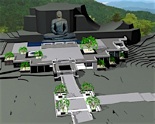
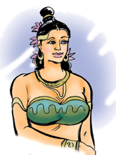
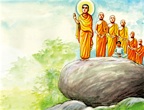



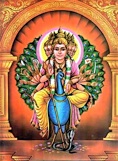
Kataragama
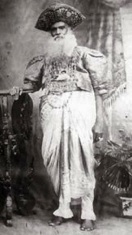
Maduwanwela Maha Dissawa
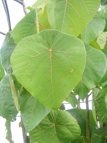

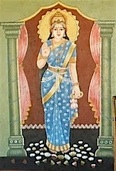
Pattini
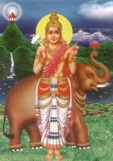
Saman ou Natha
















